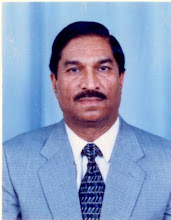November 19,
2012
By Saeed Qureshi
Bal Thackeray the founder of the
Shiv Sena has died at the age of 86.His legacy that he bequeathed is parochialism
and hatred for all other races except Marathis for whom he founded in 1966, this cult
type outfit in the state of Maharashtra. Viewed in the murky light of his
political philosophy he stands out as the antagonist of the Indian constitution
that essentially is secular and shuns sectarianism, communalism, racial
discords and ethnic divisions.
Thackeray
was known as a symbol of violence, terrorism and fear for other ethnic groups
in Bombay and elsewhere in Maharashtra that were periodically targeted by
ferocious and murderous gangs of Shiv Sena. He was a fanatic Hindu of typical
brand and had spun a spiritual aura around his mysterious personality.
He was revered by his followers as a kind of
deity with esoteric powers. As a fiery speaker in his own right and with a
complexion of Hindu Sadhu or pundit (monk) he would inspire his devotees to
faithfully follow his commands no matter how perilous and fatal those were for
the rest of the community.
Such was the tight hold of Thackeray on the affiliates
and members of the Sena (army) that they would not hesitate or think twice to
rampage and even spill blood of the victims. Although Thackeray never held any
office, yet in due course he had gathered so enormous a clout that he would
dictate his demands to the government functionaries in the state by telephone
calls and they would readily oblige.
As the head of a fanatic militant party, Bal
Thackeray became the Godfather or the monarch of Bombay, an Indian metropolis that
excels in business and bollywood galore and is the hub of a fast paced varied
social life. He was also dreaded by the state government as he could spill
disaster on the spur of the moment by a simple call.
He was never indicted against a long list of criminal
activities that for others could be an ensured passage to jail if not to
gallows. Since he stood for and represented only one minority in the Indian
federation, otherwise dotted with innumerable religious and social factions;
his philosophy and creed was entirely narrow and biased. He was brazen in his
opposition to the other ethnic communities living in Maharashtra whom he would
dub as outsiders and would want them to be pushed out of that state
In order to
establish the supremacy of the Marathis in jobs, business and social status, his
slogan was that “only Marathis [residents of Maharashtra] have the first right
over Mumbai," From the springboard of Shiv Sena, he launched a vigorous movement
against the South Indian migrants (from Bihar), the Gujaratis, Marwaris and the
religious minorities particularly the Muslims to force them to leave the
Maharashtra state. It was also aimed at halting the spread of Islam in India. Precisely
for this reason Thackeray asked the Sena cadres in 2002 to respond to Islamist suicide bombers by becoming suicide bombers
themselves.
His deep aversion and acute hatred for non
Marathis led to their harrowing massacres, loot and plunder of non Marathis by Shiva
Sena brigands for decades. During 1960s and 70s a prolonged reign of terror and harassment was let loose against
the South Indians by the bandits of Shiv Sena who vandalized the shops, businesses, restaurants and homes of the
former.
In 2008, the Biharis were brutally targeted by
Shiv Sena hoodlums after Thackeray labeled them as infiltrators and outsiders.
Most of these outsiders earned their living as taxi drivers, selling milk and
newspapers. They were intimidated, beaten intermittently and forced to leave
Bombay and other cities in the Maharashtra state. It was a kind of ethnic
cleansing by violent means to make the Marathis as the majority race in his state.
From 1984 onward Shiv Sena carried out attacks
on Dalit farmers in Vidarbha and Marathwada, destroying their crops and burning
their huts. Shiv Sena also killed
many unyielding politicians, journalists, community activists and notable individuals,
whose names are available in the history books.
In 1992, The
horrendous riots broke out between Hindus and Muslims after the demolition of
the Babri mosque by fanatic Hindus with Shiv Sena militants in the lead. In those
deadly riots during which the Shiv Sena cadres played dominant role, 900 people
died in Bombay. More than 2,000 people were killed in ensuing riots in many
major cities of India.
The Shiv Sena is
already going through a process of disintegration and fragmentation. It is already
divided into two parts. Although his son Uddhav has taken over the reins of Shiv Sina, yet he cannot be a match to his father’s charisma and commitment in leading the party
on chauvinistic tracks.
After Thackeray
appointed his son as his successor in 2006, his nephew Raj Thackeray separated from the Shiv Sena and formed his faction naming
it “Maharashtra Navnirman
Sena”. Earlier many colleagues of Thackeray also left
the party due to differences on the rigid and racial policies of the boss.
One may safely predict
that under the changing times, it would be utterly difficult for the Shiv Sena to
continue the legacy of violence and terrorism against the minorities in order
to give ascendancy to Marathis or to browbeat the Muslims.
A great deal of homogeneity
and mutual understanding is developing among the diverse religious and ethnic
sections in India. The creed of ethnic hatred and militancy as propounded by
Shiv Sena seems to have run out its course. Shiv Sina is a spent force and
cannot maintain or revive it creed of terrorism and violence anymore.

No comments:
Post a Comment